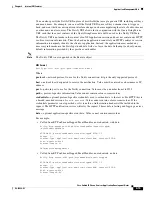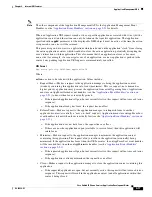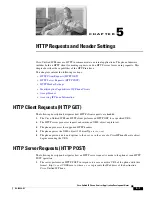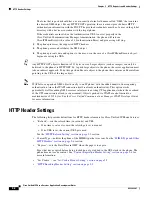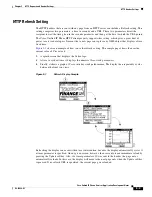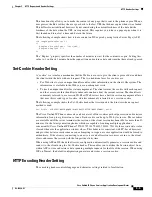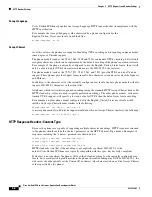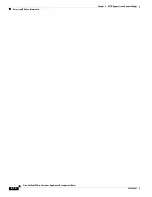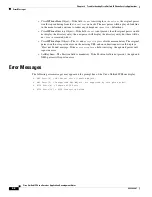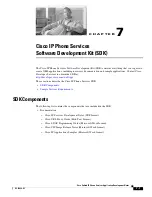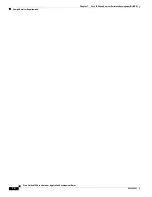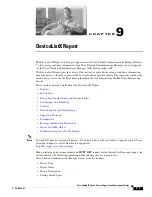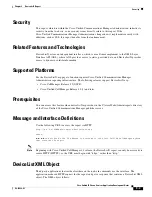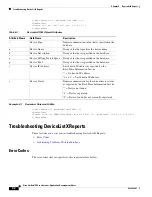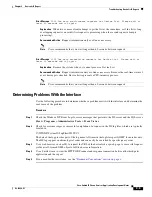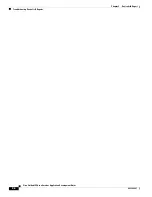
C H A P T E R
6-1
Cisco Unified IP Phone Services Application Development Notes
OL-18696-01
6
Troubleshooting
Cisco Unified IP Phone
Service Applications
This chapter contains the following sections:
•
Troubleshooting Tips
•
XML Parsing Errors
•
Error Messages
Troubleshooting Tips
The following tips apply to troubleshooting Cisco Unified IP Phone service applications:
•
Microsoft Internet Explorer 5 or higher can display the XML source with its default style sheet.
•
Understand that standard IP troubleshooting techniques are important for HTTP errors.
•
Externally verify name resolution (Phone has DNS set).
•
If DNS is suspected, use IP addresses in URLs.
•
Browse the URL in question with Microsoft Internet Explorer or download and verify with another
web browser
•
Use a logged telnet session to verify that the desired HTTP headers are returned (Telnet to the server
on port 80; then, enter get /path/page).
XML Parsing Errors
The following tips apply to troubleshooting XML parsing errors in Cisco Unified IP Phone services
applications:
•
Verify the object tags (the object tags are case sensitive).
•
Verify that “&” and the other four special characters are used per the restrictions while inside the
XML objects. See
Chapter 2, “CiscoIPPhone XML Objects”
for more information.
•
Validate XML applications developed prior to Cisco Unified IP Phone firmware release 8.3(2)
against the more recent XML parser (see the
“Updated XML Parser and Schema Enforcement”
section on page B-1
for details). Some of examples of the types of errors you might encounter
include:

